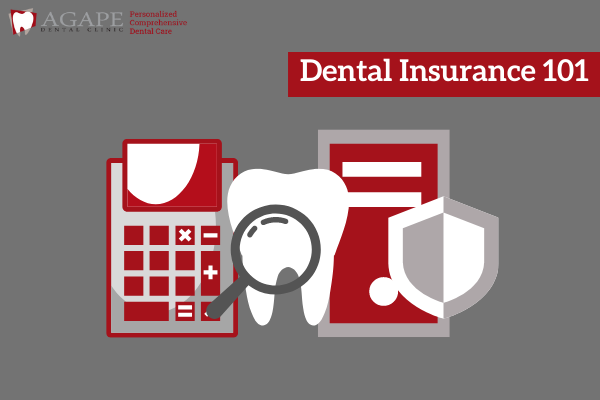
In Alberta, general Oral Health Care is not included in our Canadian Health Act (CHA).
To ease the burden of Oral healthcare, many Albertans are provided oral healthcare coverage through their employer, union or through provincial government-funded programs, such as the Senior’s Dental Assistance Program, Alberta Works, Child health Benefits or NIHB for Native Indians.
Difference between Dental Plan and Treatment Plan
Patients sometimes confuse Dental plans and Treatment plans. It is important to understand the difference so you can plan for and budget your oral healthcare costs
- A dental plan (also referred to as a dental insurance plan or dental benefits plan) is a means to help you to pay for your dental treatment. It is an arrangement or a contract made between the patient and their insurer. Through this arrangement or contract, the insurer sets the coverage and frequencies for treatment that is covered under the plan provisions.
- A treatment plan is a personal plan you and your dentist develop together to meet your oral health needs. It serves as your road map to good oral health and should not be limited by what a dental plan will cover.
It is very important to remember that your dentist is treating you, not your dental plan. In other words, your treatment plan reflects your oral health needs and is not based on what your dental plan will cover.
Optimizing Your Dental Insurance Plan: Understanding the terminology
Dental insurance terminology can be confusing. It is difficult to understand all the ins and outs of your insurance plan but knowing the commonly used terms can help you get the most out of your coverage. We have provided a simple explanation of the more commonly used terminology:
- Annual maximum: most dental insurance policies come with an annual maximum. This is the most your dental insurance provider will pay for dental services within the benefit period, usually a calendar year.
- Deductible: this is the amount that you will have to pay out of pocket each year before your insurance company will pay for any procedures or treatments. Your deductible will vary depending on your plan.
- Exclusions: the dental services that are not covered by your insurance plan.
- Co-insurance: An insurance plan where you pay a percentage of the cost of dental service.
- Co-payment: Co-Payment (also known as co-insurance) is the portion of the bill that is the patient’s responsibility. Many dental plans have co-payments or in other words a portion of the claimed amount that will not be covered. Your dental insurance provider typically sets the copayment or co-pay amount. Patients may be told that their plan covers 100 % however insurers often have a maximum payable amount that may be lower than the actual dentist’s fee for the services rendered.
- Deductible: The amount that you must pay for a dental service before your dental insurance plan covers the cost.
- Direct assignment billing: An arrangement where your dentist bills your insurance provider directly, so you do not have to pay the full cost of your dental service up-front.
- Limitations: this is a list of the procedures that the insurance policy will not cover or come with conditional coverage. Coverage may be limited to a certain number of procedures or exclude certain treatments entirely.
- Premium: this is the fee charged by insurers used to fund the insurance plan.
Optimizing Your Dental Insurance: Understanding Your Dental Insurance Plan
Understanding your dental plan and what it covers can be a daunting task. Each insurance plan is unique and can differ from one provider to the next. The amount or maximum available for treatment, the percentage of the cost covered by your plan, and the types of dental services covered can vary. Most plans provide complete coverage for most preventative treatments such as x-rays or fluoride treatments, meaning you will receive these services at no cost to you.
At Agape Dental Clinic, our Front desk staff are well versed in the ins and outs of different insurance policies and work well with the providers to help you optimize your benefits
Dental Insurance: Basic Coverage
Most insurance policies cover basic and preventative dental treatments such as cleanings, exams, fillings, root canal treatment, and some dental surgeries such as tooth extractions. They may also cover some major dental treatments such as bridges, dentures, and orthodontics. In most cases, basic dental work has the highest amount of coverage, and major treatments are covered at about fifty to sixty percent.
Some dental plans will not cover certain procedures at all. It is a good idea to go over your plan in detail before electing to undergo any new dental procedure to ensure that you avoid any surprises when it comes to cost.
What is Involved in Preventative Dental Treatment?
It may be challenging to discern what counts as preventative treatment from an insurance perspective. Most insurance policies will cover radiographs and exams once a year, as well as professional dental cleanings. Dental cleanings are based on your specific oral health needs, not on the amount of coverage your company provides, but most dental clinic will keep you in the loop.
Understanding Fee Guides
Similar to how dental clinic follow different fee guides, insurance companies come with their own set of fee guides. It is essential to understand that dental clinic fee guides outline how much the procedure should cost, whereas insurance fee guides outline how much of that cost they will cover. Sometimes, these numbers don’t match, and you will have to pay for the balance owing out of pocket.
Dual Insurance
Sometimes individuals are covered by two or more dental benefit plans. This is usually when there is coverage under a plan from their employer and a second one from their partner’s employer. When this happens, it is called dual insurance or dual coverage. Benefits from all sources should not exceed 100% of the total charges. When there is dual insurance, Coordination of benefits between insurance providers sorts out which provider pays first. The plan in which the patient is enrolled as an employee or as the main policy holder is considered the primary plan. The plan in which the patient is listed as a dependent is usually considered a secondary plan and is used after the main insurance pays the benefit. In some cases, the treatment costs may be shared up to 100%, and in that case, individuals with dual insurance would end up paying less than if an individual only had one insurance provider.
How Your Dentist Can Help: Predetermination
At Agape Dental, we understand that insurance can be hard to deal with, and our front desk team is happy to submit a predetermination on your behalf to make the process easier. This will involve several documents, including radiographs and photos of your teeth being sent over to your insurer. Once they have reviewed these documents, your insurance provider can let you know whether they will cover a portion of or all of your treatment. This estimate is not a guarantee but can give you a good idea of what to expect when it comes to billing.
Predetermination does not involve any billing; it is only done to provide you with an estimate of how much you will have to pay out of pocket. Your billing will be done once your treatment is complete.
Visit Agape Dental Clinic
Our team at Agape Dental Clinic is here to help you maintain excellent oral health and achieve all your smile goals. We understand the important role that finances play in your decision to pursue dental treatments, and our team is happy to help you each step of the way.

